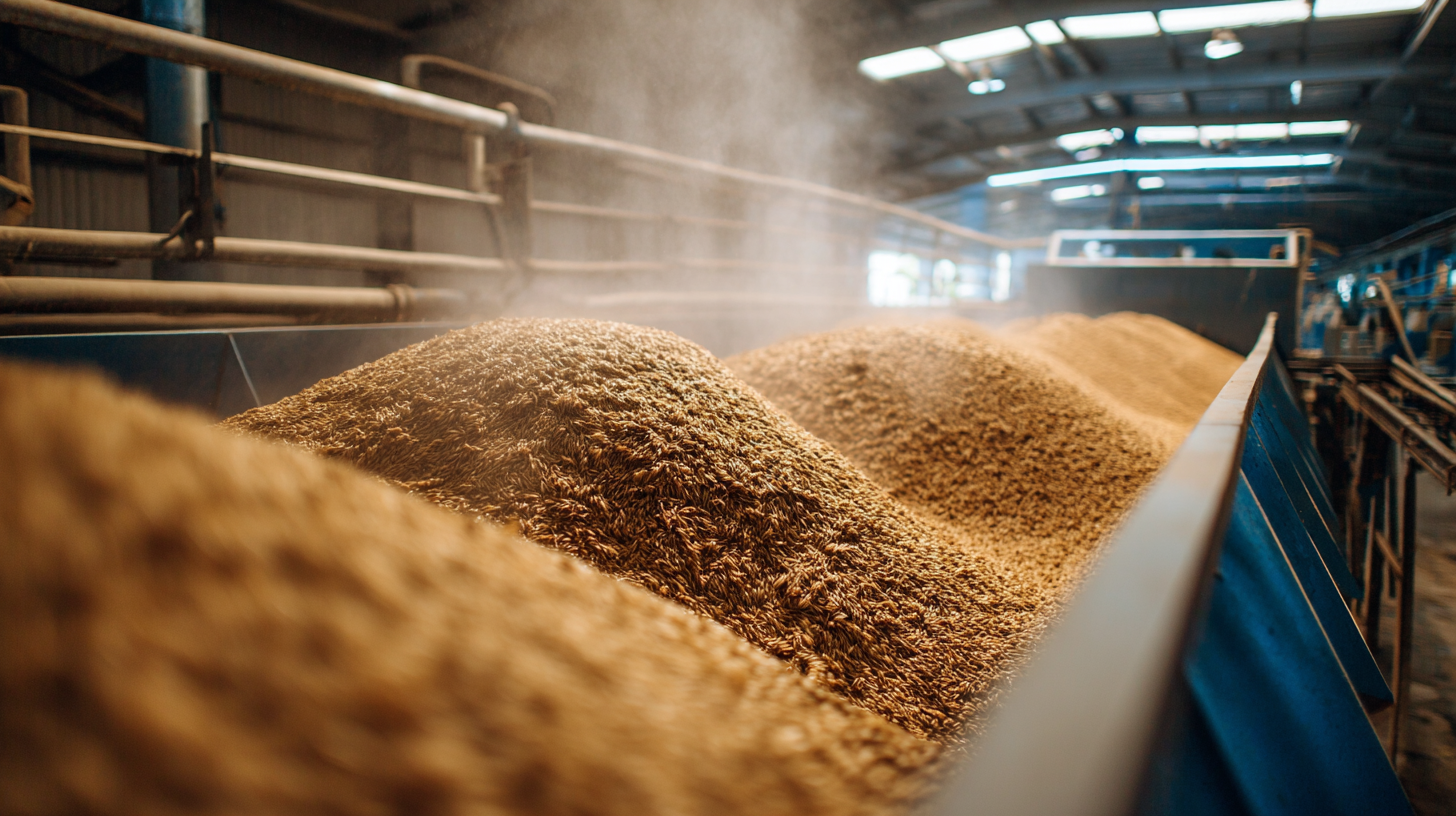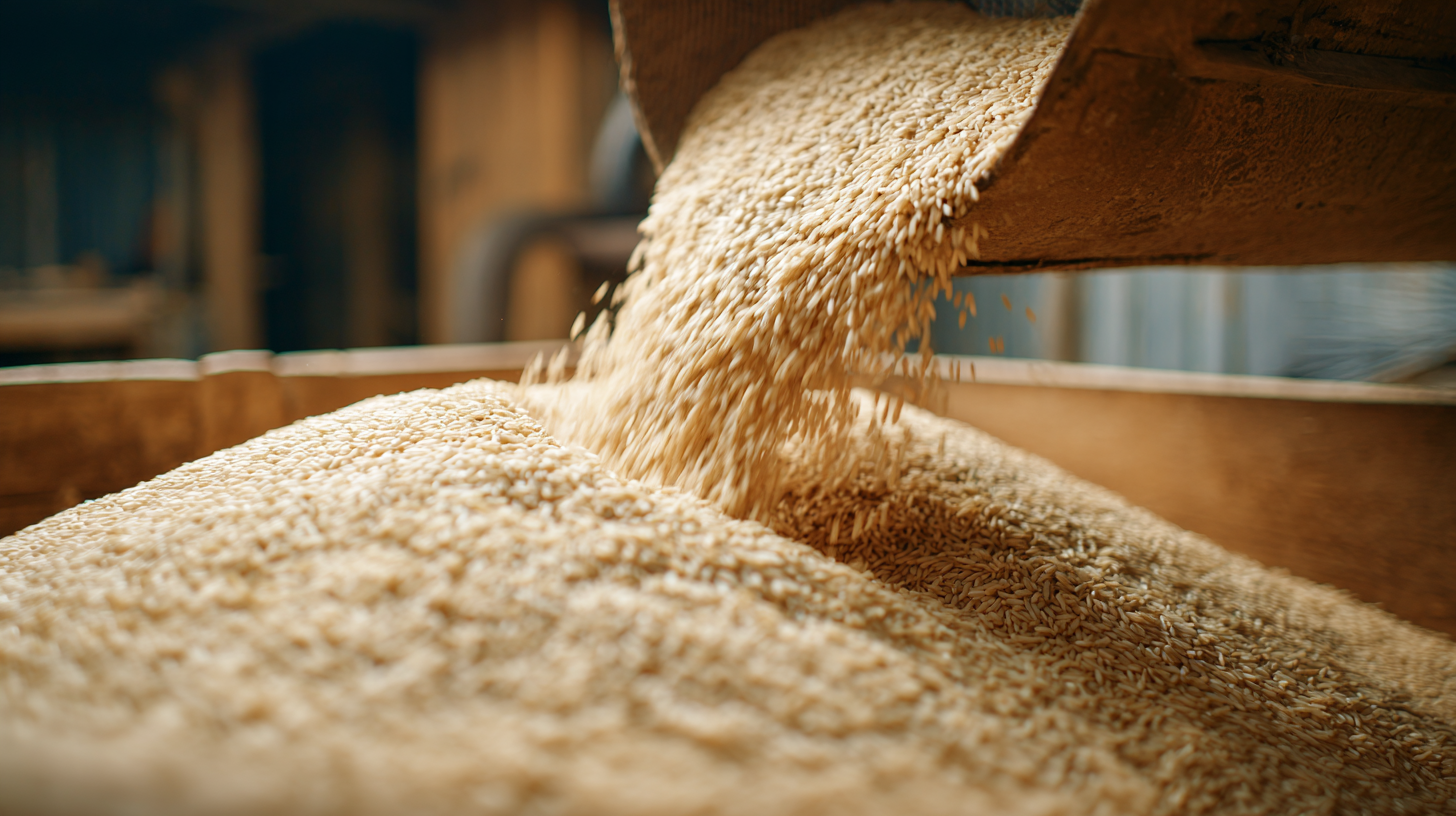Leave Your Message
 The efficiency of modern rice dryer technology plays a crucial role in the post-harvest processing of rice, significantly impacting both quality and economic returns. According to a report by the Food and Agriculture Organization (FAO), approximately 20% of harvested rice is lost due to inadequate drying methods, which can lead to mold, spoilage, and reduced market value. The implementation of advanced rice dryers has demonstrated the potential to decrease moisture content uniformly, enhancing the preservation of nutritional quality while minimizing storage losses. A study by the International Rice Research Institute (IRRI) highlighted that using modern rice dryer systems can improve drying efficiency by up to 40%, translating to significant savings for farmers and increased productivity. In light of these findings, understanding the science behind rice dryer technology is essential for optimizing rice production and ensuring food security in an ever-growing global population.
The efficiency of modern rice dryer technology plays a crucial role in the post-harvest processing of rice, significantly impacting both quality and economic returns. According to a report by the Food and Agriculture Organization (FAO), approximately 20% of harvested rice is lost due to inadequate drying methods, which can lead to mold, spoilage, and reduced market value. The implementation of advanced rice dryers has demonstrated the potential to decrease moisture content uniformly, enhancing the preservation of nutritional quality while minimizing storage losses. A study by the International Rice Research Institute (IRRI) highlighted that using modern rice dryer systems can improve drying efficiency by up to 40%, translating to significant savings for farmers and increased productivity. In light of these findings, understanding the science behind rice dryer technology is essential for optimizing rice production and ensuring food security in an ever-growing global population.
 Modern rice drying processes are essential for preserving grain quality and maximizing yield in the agricultural sector. With the global rice production reaching approximately 700 million tons in recent years, efficient drying technology has become a pivotal part of post-harvest handling. Traditional sun drying methods can cause significant quality deterioration and losses due to weather uncertainties, while advanced technologies, such as continuous flow dryers and multi-layer systems, ensure uniformity and minimize handling time.
Modern rice drying processes are essential for preserving grain quality and maximizing yield in the agricultural sector. With the global rice production reaching approximately 700 million tons in recent years, efficient drying technology has become a pivotal part of post-harvest handling. Traditional sun drying methods can cause significant quality deterioration and losses due to weather uncertainties, while advanced technologies, such as continuous flow dryers and multi-layer systems, ensure uniformity and minimize handling time.
Recent studies indicate that modern rice drying machines can achieve moisture removal efficiencies of up to 98%, significantly reducing the risk of mold and spoilage. For instance, the adoption of heated air-based drying systems can lower moisture content from 25% to safe storage levels of 14% within hours, as opposed to days with traditional methods. According to a report by the Food and Agriculture Organization (FAO), improving drying efficiency can lead to a 20% increase in overall output value for farmers. Additionally, energy-efficient designs of these dryers have been shown to cut fuel consumption by as much as 30% compared to older technologies, making them not only sustainable but also cost-effective solutions for modern agriculture.
Modern rice dryer technology integrates several key innovations that enhance the efficiency of post-harvest processing. One of the prominent technologies is the implementation of hot air generators, which optimizes the drying process by ensuring uniform air distribution and precise temperature control. This capability significantly reduces energy consumption while maintaining the quality of the rice, crucial for meeting market standards. Additionally, the use of programmable logic controllers (PLCs) in contemporary dryers allows for automation in the drying process, providing farmers with greater control over moisture removal and thereby safeguarding the grain from spoilage.
Another noteworthy advancement in rice drying technology is the incorporation of solar energy solutions. Solar dryers leverage renewable energy to efficiently dry rice, which is particularly beneficial in regions with abundant sunlight but limited access to electricity. This not only aligns with sustainable agricultural practices but also addresses the challenges posed by variable irrigation conditions, as seen in programs promoting alternate wetting and drying techniques. Such adaptations are essential for enhancing productivity and resilience in rice cultivation, underpinning broader agricultural goals across regions like the Philippines and Cambodia.
The efficiency of modern rice drying technology is significantly influenced by various factors, including air management, moisture content, and energy use. Recent advancements in drying techniques, particularly those employing liquefied petroleum gas for dehumidification, have demonstrated that optimizing air properties can substantially reduce exergy losses, thereby enhancing overall drying performance. According to a study utilizing adaptive neuro-fuzzy inference systems and artificial neural networks, careful adjustment of these parameters led to notable improvements in the energy and exergy efficiencies of batch paddy rice drying.

Additionally, the integration of intelligent systems such as machine learning holds great promise in optimizing rice yield sustainability. A recent study revealed that such technologies could identify critical determinants affecting rice yields over the past 50 years, highlighting the interplay between climatic factors and farming practices. This information is crucial as rice, being a staple food for billions worldwide, necessitates efficient production methods to address rising demand and environmental challenges, reinforcing the need for innovative drying technologies and sustainable practices in rice cultivation.
The efficiency of rice drying methods has evolved significantly, with modern technologies offering substantial advantages over traditional practices. Traditional drying methods, such as sun drying, often result in uneven moisture content, which can lead to quality degradation and increased susceptibility to pests and fungi. According to a report by the Food and Agriculture Organization (FAO), traditional methods can leave up to 20% of rice moisture if not monitored carefully, potentially causing losses in yield and quality.
In contrast, modern rice dryer technologies, such as convection and infrared dryers, provide controlled environments that ensure uniform moisture removal. Research shows that such technology can reduce drying time by up to 50% while maintaining a consistent grain moisture level around the optimal 14%. Moreover, a study published in the Journal of Agricultural Engineering highlights that modern dryers can improve the overall quality of dried rice by minimizing stress cracks and maintaining favorable milling rates, which can be as high as 70%, compared to only 60% in traditionally dried rice.
Additionally, modern drying solutions offer energy efficiency that traditional methods cannot match. For instance, solar-assisted and heat pump dryers consume significantly less energy, leading to lower operational costs. A comprehensive assessment by the International Rice Research Institute indicates that adopting modern drying technologies can lower energy consumption by approximately 40% compared to conventional drying methods, underscoring their potential to revolutionize rice processing.
Advanced drying techniques have revolutionized the post-harvest processing of rice, significantly enhancing its overall quality. Traditional drying methods often lead to uneven moisture distribution, which can result in mold growth or spoilage. However, modern rice dryer technologies utilize controlled environments that maintain optimal temperature and humidity levels, ensuring uniform drying and preserving the grains' nutritional value. This precision in drying not only improves the shelf life of rice but also enhances its texture and taste, making it more appealing to consumers.
Furthermore, these innovative drying systems incorporate energy-efficient processes that reduce waste and lower operational costs. By harnessing solar energy or utilizing heat recovery systems, modern rice dryers minimize environmental impact while maximizing throughput. The implementation of sensors and automated controls in these dryers allows for real-time monitoring and adjustments, ensuring that each batch of rice is dried to perfection. As a result, the industry sees a marked improvement in quality standards, supporting not only consumer satisfaction but also reinforcing the market position of rice producers globally.
| Dryer Type | Efficiency (%) | Drying Time (hours) | Energy Consumption (kWh) | Moisture Reduction (%) |
|---|---|---|---|---|
| Vertical Flow Dryer | 90 | 5 | 15 | 18 |
| Continuous Flow Dryer | 85 | 4 | 20 | 20 |
| Centrifugal Dryer | 88 | 3 | 18 | 22 |
| Batch Dryer | 80 | 6 | 25 | 15 |
| Solar Dryer | 75 | 8 | 10 | 12 |






